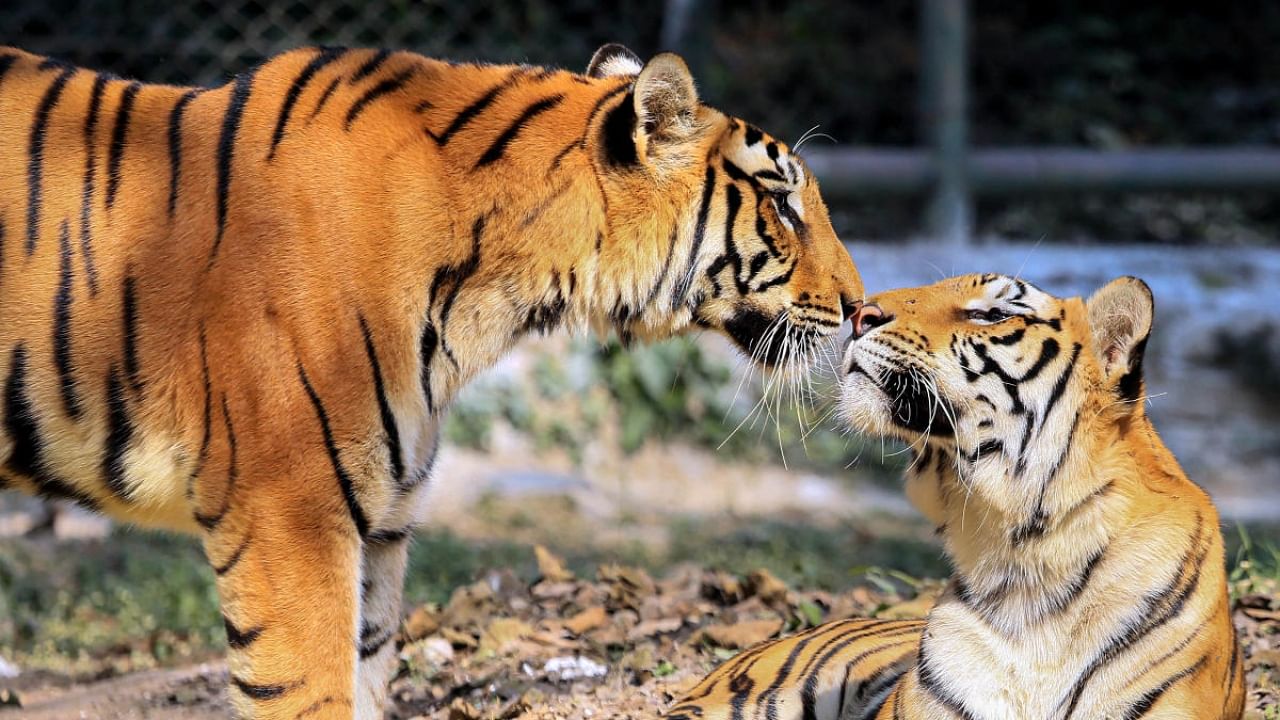
As a charismatic species, the tiger has largely captured and shaped the idea of a contemporary Indian on wildlife and biodiversity conservation. Today, the tiger population is as closely monitored as the national gross domestic product (GDP) and the population growth. However, this has also led to a collective lack of concern for India’s other wildlife and overall biodiversity conservation.
Public support for tigers brought them back from the brink of extinction in India. The tiger as a flagship species has led to the conservation of other endangered species like the Lion-tailed macaque, Nilgiri Tahr, Barasingha etc. However, we should note that not all endangered species in India share a habitat with tigers.
As per the 2019 report of the National Tiger Conservation Authority (NTCA), tiger occupancy is only in about 9 million hectares of over 70 million ha of forests in India, mostly declared tiger reserves.
The project tiger receives top priority in funding, protection and conservation research, including quadrennial assessment of the tiger and its prey population. This has led to a lack of conservation efforts on several other endangered species outside of tiger habitat and even a population assessment to ascertain if it requires immediate conservation efforts to prevent extinction. An example is the Great Indian Bustard, of which less than 150 are said to be in the wild. Jerdon’s courser faces a similar fate in the scrub forests of Andhra Pradesh, hill mynas in Bastar and the Hoolock gibbon in northeast India.
Unfortunately, people don’t protest for a Great Indian Bustard that gets electrocuted from high tension lines like they did to save the Anvi tigress in 2018 from being shot dead after it killed 14 human beings. The judiciary doesn’t intervene when extensive biodiverse-rich forests of Chhattisgarh, northeast and the Andamans are diverted for infrastructure and mining projects the same way it did to commute the shooting order issued by the Chief Wildlife Warden into a capture and life imprisonment for a conflict tiger in Mudumalai tiger reserve based on a public interest litigation. These events show our environmental activism getting limited to a single species or sometimes one animal, ignoring the other critical wildlife that begs conservation attention.
Science has long taught us that losing some species can be more catastrophic than others. In ecology, these are known as ‘Key Stone Species’. Birds like hornbills, pigeons and doves are essential in forest regeneration and deserve conservation efforts. In the words of Aldo Leopold, the American conservationist and environmental philosopher, contemporary environmentalists arrived too late to save the passenger pigeon from extinction in the 19th century in America. And India could lose some finest wildlife, many of which are endemic—not found anywhere else in the world—if conservation efforts are delayed.
Also Read: More tigers need more forest area
The prestigious journal Lancet noted in an article in 2019 that ‘Biodiversity loss and ecosystem health are strongly linked to human health’. Two events in recent years necessitate why we must avoid deforestation and biodiversity loss. One is the Covid pandemic in 2019, and the other is the Locust pest attack in the agricultural fields of Africa in 2020.
The Locust pest attack caused an estimated loss of over $76 million and severely affected the food security of Africa’s poor. It was studied to be caused by global warming and tropical deforestation. The Intergovernmental Platform on Biodiversity and Ecosystem Services—an intergovernmental body, in a report in 2020, said wildlife conservation is essential to prevent the outbreak of zoonotic diseases such as Covid in future, for which protection of biodiverse-rich forests and rare wildlife is critical.
In India, over 90,000 ha of forests were diverted to non-forestry purposes in the last five years alone. And there is a proposed diversion of 13,000 ha of the pristine rainforest of Nicobar Islands for port and township. The shrinking annual budgets of the Ministry of Environment, Forest and Climate Change (MoEFCC) show that the government has sensed that public minds are occupied with tigers. Besides the reintroduction of Cheetahs, not enough funds are reserved for other wildlife conservation efforts. In 2020, MoEFCC almost went on to stop research funds for forest and wildlife research institutions in India.
Schools and other educational institutions essentially shape public opinion on environmental activism. Unfortunately, most of them end up celebrating only World Tiger Day. India boasts of two of the 18 global biodiversity hotspots, and the biodiversity is not only on tiger reserves but also in waterbodies, rivers, deltas, and oceans. And a rich array of our ecosystems is in the form of grasslands, savannas, alpine pastures, and deserts, where immediate efforts are required to avoid biodiversity collapse. We could conserve them only if environmental activism goes beyond the striped big cat.
(The author is an environmental professional)